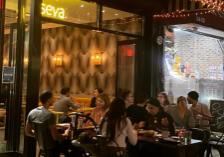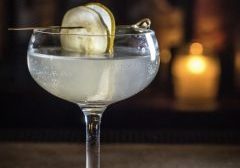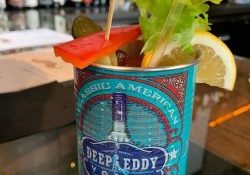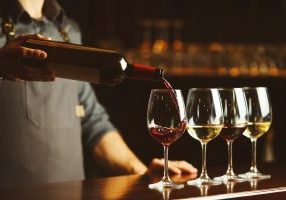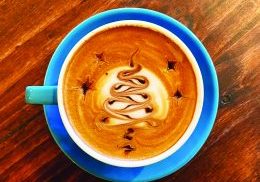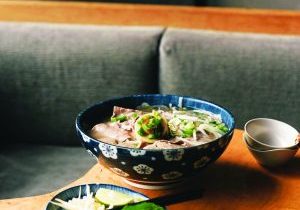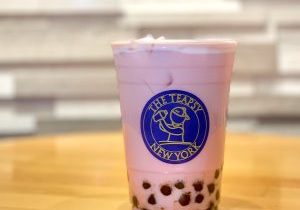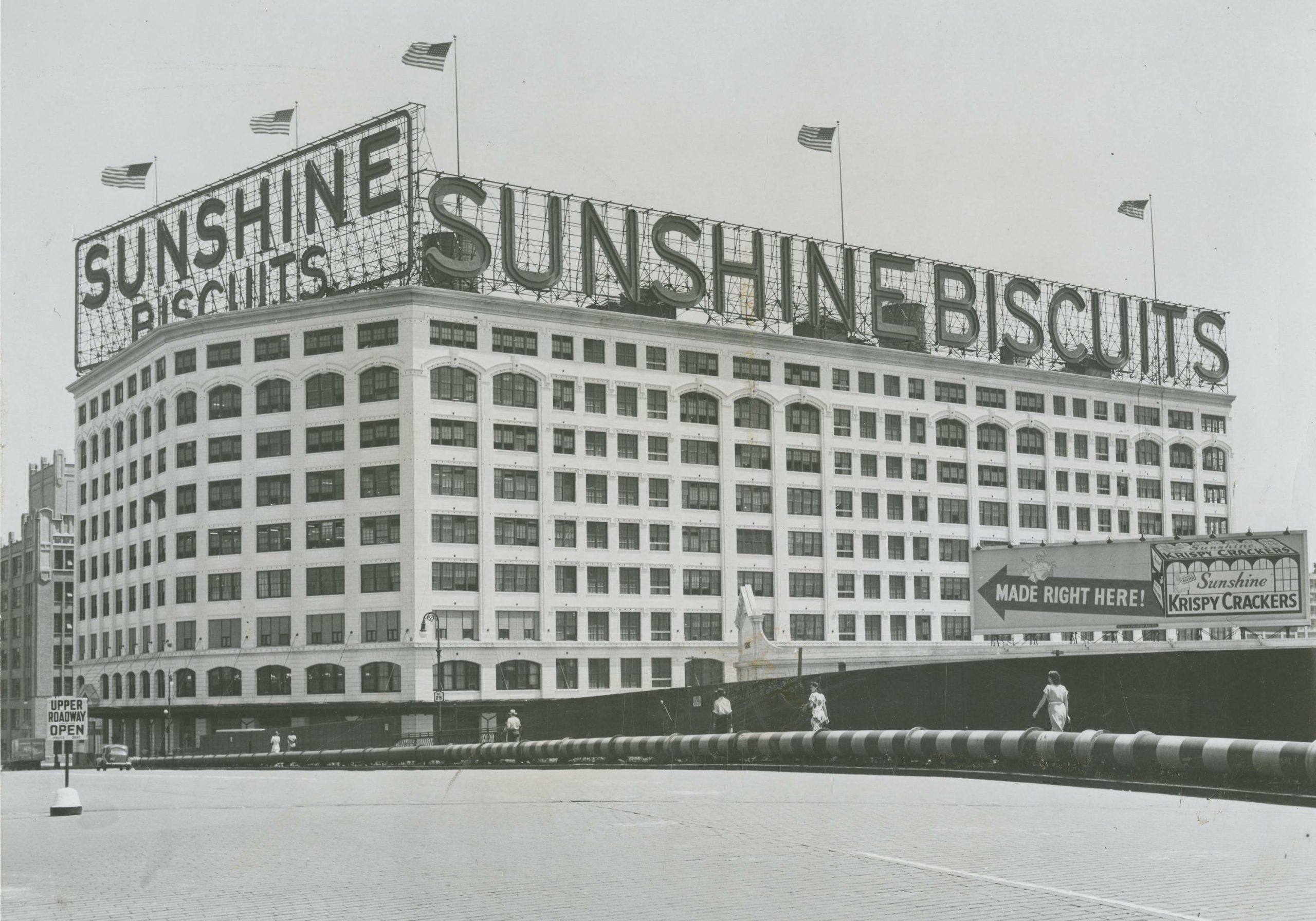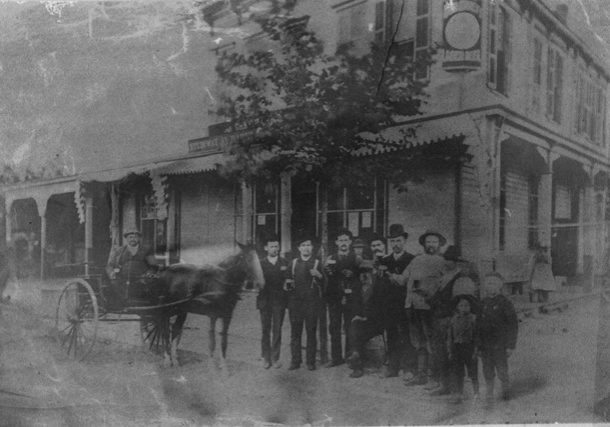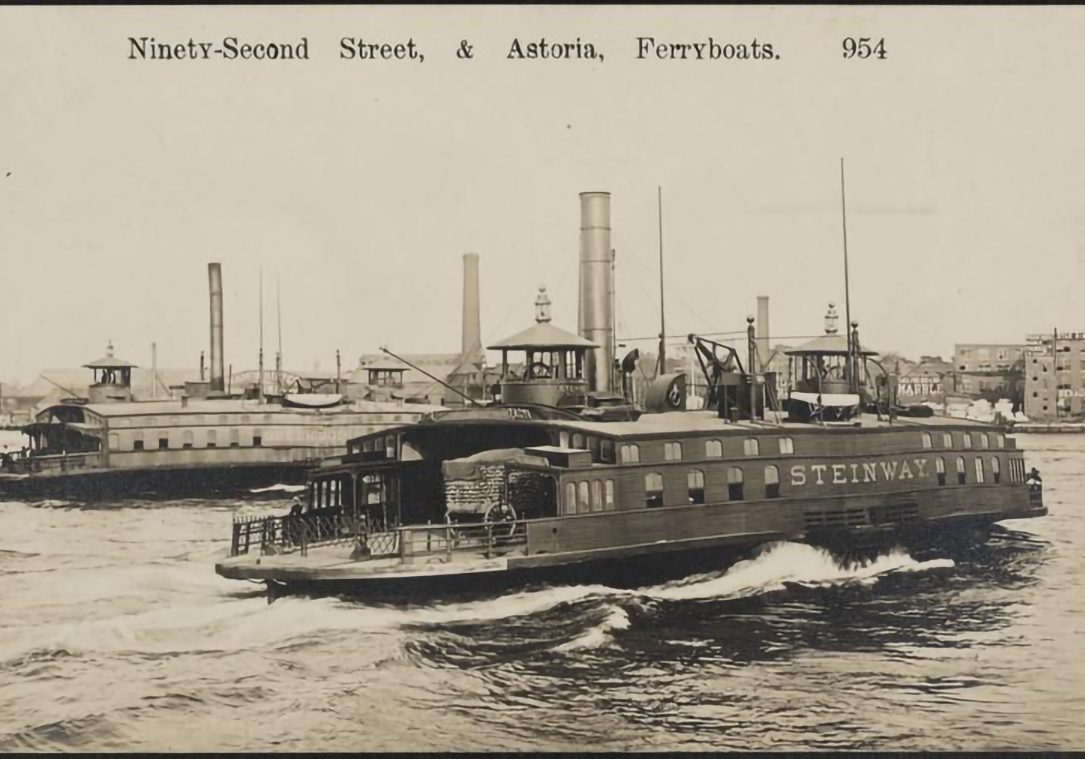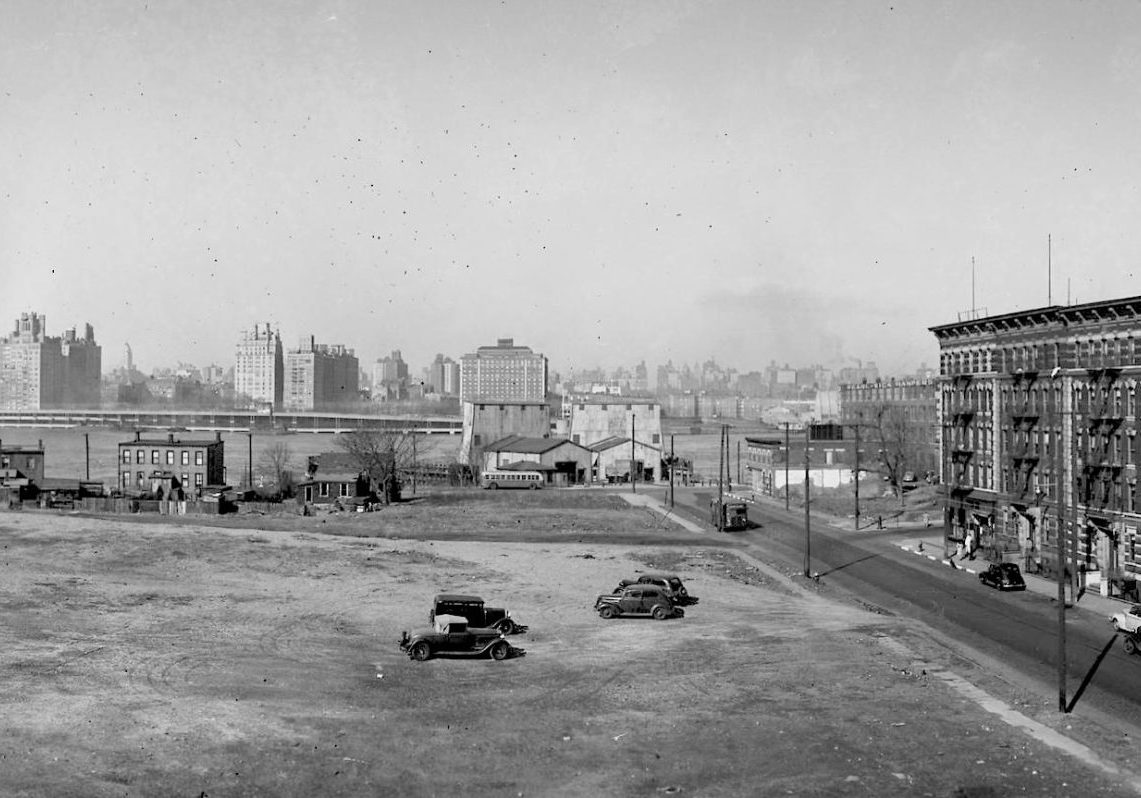Celebrating 50 Years of The Godfather
It is late at night as Michael Corleone stands beneath the neon lights of Jack Dempsey’s Broadway Restaurant on Broadway between 49th and 50th Streets where he is waiting for a car to pick him up. It soon arrives carrying three men. A heroin pusher named Virgil Sollozzo, his bodyguard a New York City police captain named McCluskey and the driver, a gangster hood named Lou.
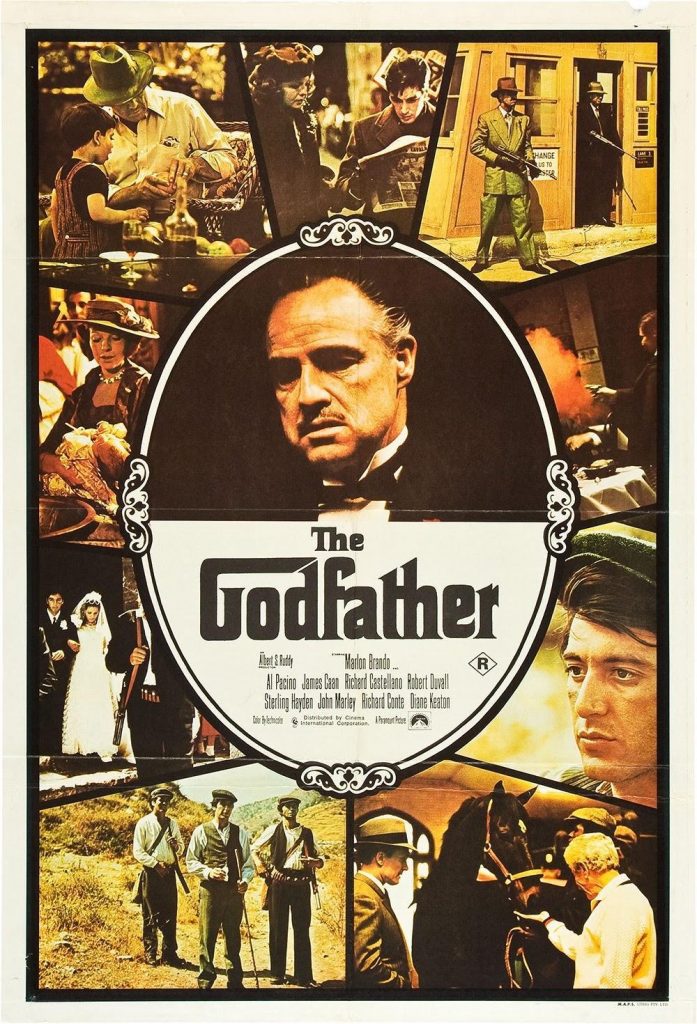
The poster for The Godfather released in March 1972.
They are taking Michael (played by Al Pacino) to Louie’s Italian-American Restaurant in The Bronx, a small family restaurant with good food and where everyone minds their own business. The reason? Michael’s father, Don Vito Corleone, who rules one of the city’s most powerful organized crime families, was shot down days earlier on orders from Sollozzo after the Don refused an invitation to enter into the drug businesses with him. Michael, the youngest of Don Corleone’s three sons, is meeting with these men to broker a peace deal and, by doing so, is taking his own life in his hands. After a while, the car suddenly enters the Queensboro Bridge. A sign on the Long Island City side reads, ‘To New Jersey’. Michael is shocked. “We’re going to Jersey?” he asks. Sollozzo simply replies, “Maybe.”
This year marks the 50th anniversary since the premiere of Mario Puzo’s The Godfather in 1972. Directed by Francis Ford Coppola and based on Puzo’s novel, the movie and book have been taking the world by storm ever since. When the book about the trials and tribulations of a Mafia crime family in post World War II America was published in 1969, it became the biggest selling novel in publishing history. Four years later, the movie would go on to win the Oscar for Best Picture. It is considered by most film critics as the best American movie ever made. The American Film Institute (AFI) ranks it as number two just behind Orson Welles’ Citizen Kane (1941).
The three hour epic was filmed in numerous locations including Nassau County, Long Island; Manhattan, The Bronx, Queens and even in Sicily. In celebration of the golden anniversary of this American movie masterpiece, we will explore two scenes that were shot in Long Island City and Astoria.
The first scene filmed in Queens happens on the Queensboro Bridge as the 1946 black Buick sedan carrying the four men to The Bronx eatery enters the bridge from the Queens Bridge Plaza side. Al Pacino questions where they are taking him. He is quickly answered as the driver turns violently to the left and the sedan leaps the small divider and heads back in the opposite direction as cars come to a screeching halt, horns blaring. All this was done to make sure that they were not being followed to the rendezvous. In the novel, Michael, Sollozzo and McCluskey drive over the George Washington Bridge but the filmmakers couldn’t get permission to film there. Coppola explains on the film’s DVD commentary track how this scene was shot in just one night.
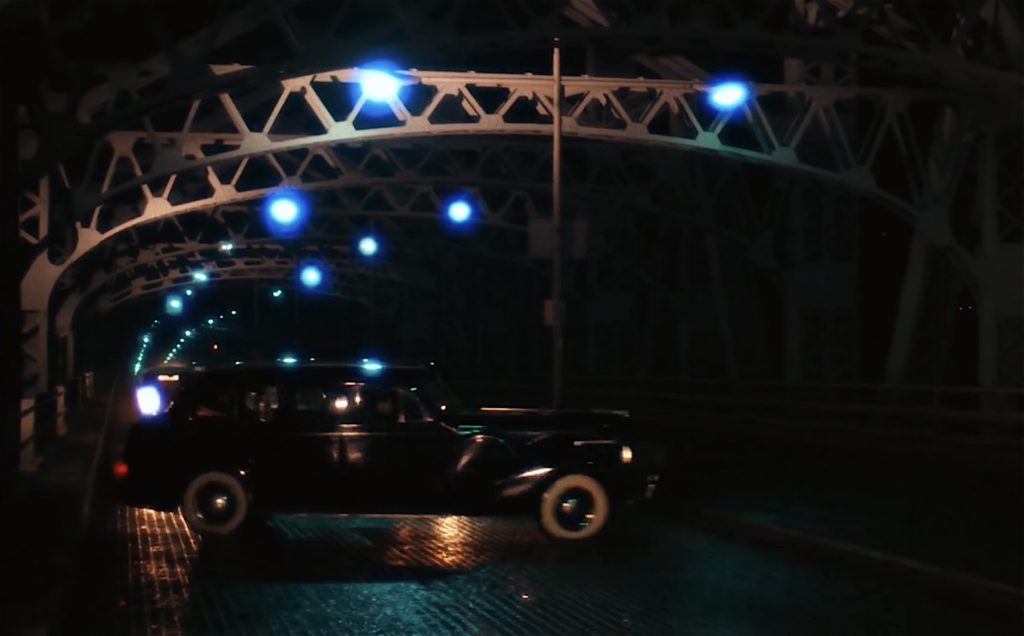
A scene filmed on the Queensboro Bridge.
“The night scene in the car was shot using what we call a poor man’s technique or process. It’s the interior of a car on an empty sound stage with lights on strings in the background made to look like the headlights of another car,” said Coppola, himself a Queens native born in Jamaica Estates. As for the U-turn shot in the middle of the bridge, Coppola explains that, “We went out at night to shoot this bridge stuff with our second unit crew. It was done in just one take.”
The scene then shifts to the Italian Restaurant in The Bronx where Michael kills Sollozzo and McCluskey. He is not there to negotiate for peace. Instead, after excusing himself to use the restroom, he returns to the dinner table with a pistol and shoots Sollozzo (played by Al Lettieri), square between the eyes and then turns to McCluskey (played by Sterling Hayden) shooting him in the throat and forehead.
The second scene was filmed at Calvary Cemetery just off the Long Island Expressway on the Woodside/Astoria border. It is here that Don Corleone, played by legendary actor Marlon Brando, is laid to rest after dying not from the bullet wounds he received in a mob hit but many years later as an old man who suffers a heart attack while playing with his grandson in the family garden. The scene filmed at Calvary Cemetery, (one of the oldest cemeteries in the nation), included 150 extras, twenty hearses and limousines and thousands of dollars worth of flowers.
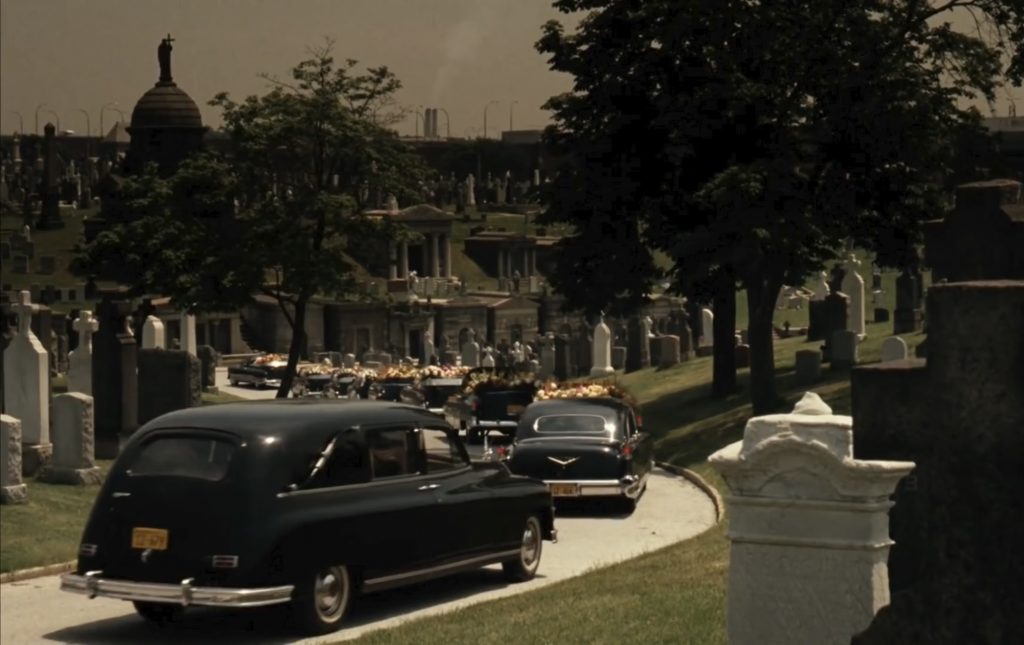
The funeral scene where the Godfather is laid to rest was filmed at Calvary Cemetery.
“Francis was mad about the noise coming from the expressway. My job that day was to keep all the spectators back from the main gate who were crowding around to get a glimpse of Al Pacino or Robert Duvall,” said Randy Jurgensen, now a retired NYPD detective who spoke to GMA and recalls his involvement with the filming of this scene and many others. “I was working security for most of the actors including Marlon Brando,” Jurgensen said. “I would walk him from his trailer and watched him as he acted.” He added that the cast was so nice to him especially Pacino and Duvall. “They wanted to know more about me then I wanted to know about them. They asked me about my career. We would all go out to lunch together,” he said.
The early 1970s was a hard time for the police as well as Ret. Detective Jurgensen. There were more than a 1,000 murders in the city of New York during the filming of “The Godfather” in 1971-72. This caused the film’s insurance (and all movies being made on the streets of NYC for that matter) to go through the roof. Fellow officer and friend Sonny Grosso had referred Jurgensen to Coppola. Both men had worked on the famous French Connection case as detectives and also on the film of the same name as technical advisors. The film had won Best Picture the year before, The Godfather.
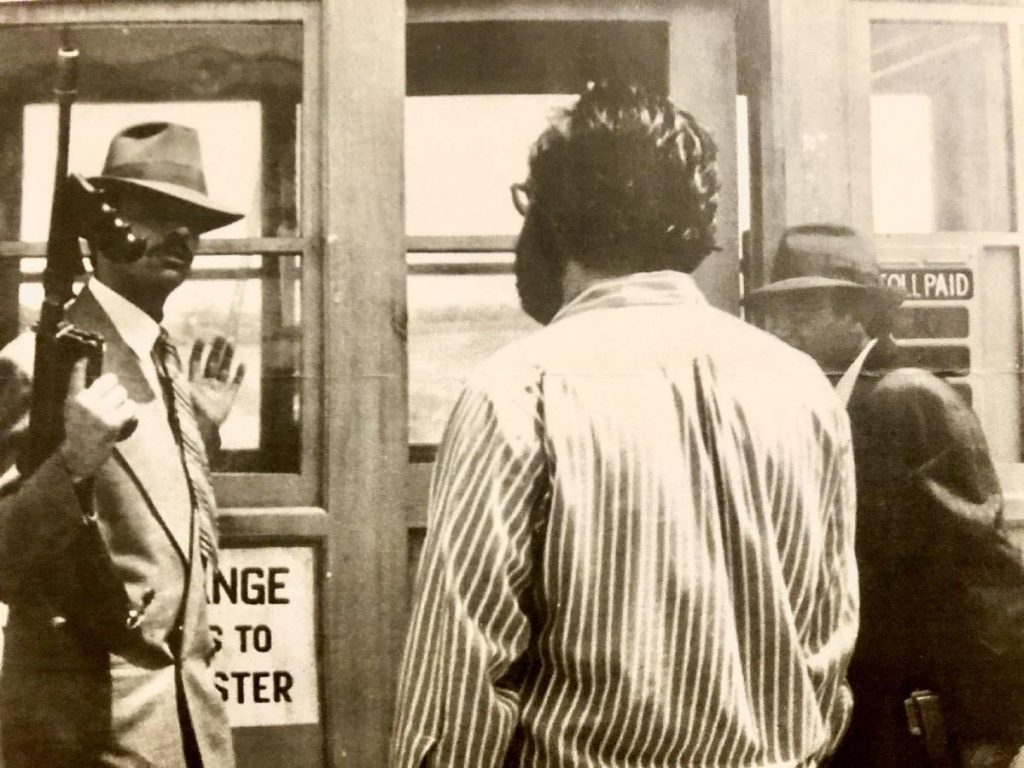
The killing of Sonny Corleone was filmed at Mitchell airfield. Randy Jurgensen is on the right and director Francis Ford Coppola is at center.
The Godfather has additional Queens connections as well. James Caan who plays the oldest son, Santino “Sonny” Corleone is from Sunnyside. And Joe Spinell who plays hit man Willie Cicci is from Greenpoint Avenue in Woodside. As for the cigars smoked by various gangsters and their associates in both book and movie, the smoke of choice are Di Nobili cigars which were made in Long Island City.
For his efforts Jurgensen was cast as an extra in one of the film’s most violent scenes where Caan gets killed at the tollbooth along the Long Beach Causeway in Long Island. The filming took place at the old Mitchell airfield in Nassau County. Jurgensen along with several other extras were dressed in period suits, grey fedoras and armed with Thompson Sub Machine guns. Caan was fitted with more than 200 squibs (packets containing fake blood), which explode away from the body giving the illusion that the person has been shot.
“The filmmakers used an off color of red for the blood so it would show up better on film,” Jurgensen said. “Coppola had us point our guns which were filled with blanks but still made a lot of noise, up in the air and fire! Jimmy Caan reacted to that. When we pointed our guns at him we never pulled the trigger but just jerked the guns like so as the squibs exploded all over him. When we were finished, Coppola came up to me and said, ‘Randy, you are going to be the most hated man in America. You are the man who shot Sonny Corleone’. Jimmy Caan was a real heartthrob in those days.”
In recognition of its 50th anniversary, The Godfather was re-released into theaters in early March and was released on BluRay and 4K UHD by early April.
“It’s an honor to have worked on this film,” Jurgensen remembers. “We were making a serious movie not only about an American way of life but a New York City way of life!”

